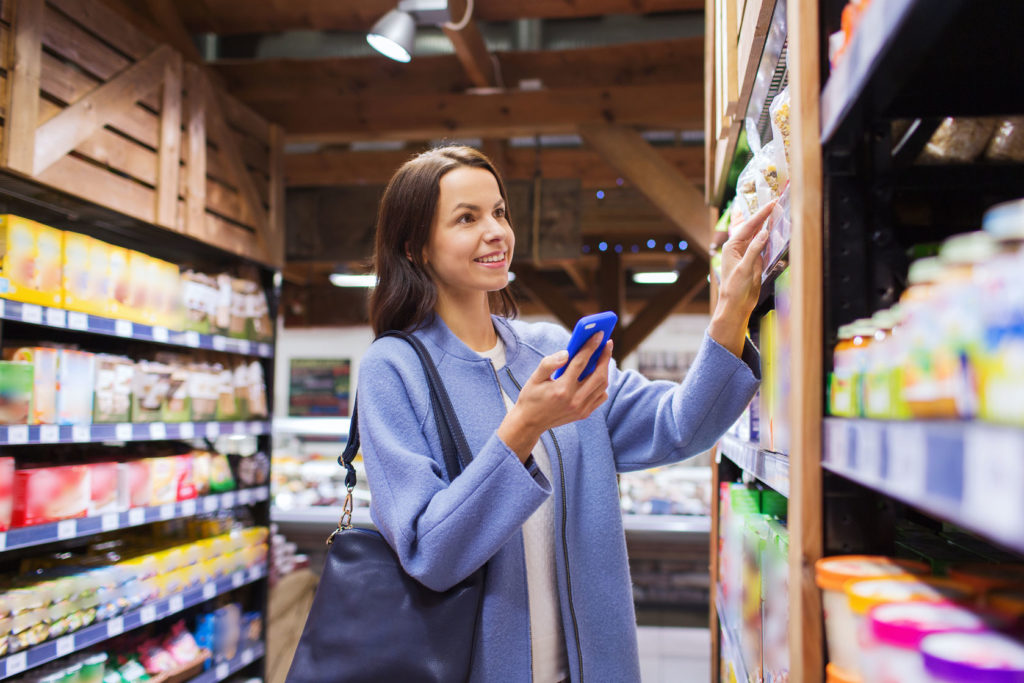Consumers in North America demand quality and convenience when it comes to their food, and according to research, brands believe that these shoppers also expect the same of their product packaging.
A survey of 250 brand owners in the consumer packaged goods (CPG) industry found that 75 percent expect to increase their spending on packaging during the next year, with nearly a third of them doing so by more than 10 percent, according to L.E.K. Consulting.
This shows a significant increase from previous years with 65 percent of CPG companies advancing their spending in 2018, and only 40 percent in 2017.
“CPG brand owners recognize consumers want more convenience, and companies are looking to packaging to help provide it. This will entail some major changes to packaging, and CPGs are responding and investing,” says Thilo Henkes, Managing Director at L.E.K. Consulting.
The connection between the quality of the packaging and the product inside is crucial for sales, a vast 90 percent of brand owners surveyed say packaging makes or break the success of their brand.
To stay on top of trends, 57 percent of brand owners are investing in packaging that is easier to open, with 51 percent implementing single-serve portions and 49 percent expanding their product placement to convenience stores and other distribution channels to reach further clientele.
When it comes to quality, premium products are driving brand growth and everything from the packaging format, the material, printing and texture attribute to the status of what’s inside.
This was demonstrated through the launch of Tetra Pak’s aesthetic packaging line in 2018. The Swiss company incorporated holographic, metallic and 2D-3D printing on its food packaging with the intention of catching the eye of curious consumers.
As companies draw connections between unique packaging and market growth, investments are diverting more into these categories. In fact, 42 percent of CPG companies say they have advanced their premium product offerings, with 35 percent expanding their promotional strategies and 32 percent expanding their price-pack offerings.
By accessing advancements in technology, package customization is another tactic used in order to draw in shoppers. For example, Tekni-Plex’s Sniff Seal technology allows a product’s scent to be accessed through the packaging without affecting the seal or compromising the content or safety of the product inside.
According to the study, brand owners expect to launch 15 percent more stock keeping units in 2020 versus those launched in 2018, with unique and alternative packing as the main target of investment.
Product personalization is also a growing trend in the CPG industry, according to the study more than half of the brand owners have invested in product personalization over the last two years. Coca-Cola’s “Share a Coke” campaign, which took place between 2013-2014 was touted to be one of the best performing marketing campaigns in the company’s history.
The bottle displayed consumers names and allowed their clientele to market their product for them, by prompting shoppers to take pictures with the named bottle and post it on social media. This generated more than 500,000 photos with the hashtag #shareacoke, along with 6 million virtual cokes trending online. The company also received 25 million Facebook followers through-out the campaign.
In addition, environmentally sustainable and ethically sourced packaging continues to be valued by consumers, and brand owners are taking notice. According to this year’s study, when asked if companies have made changes to more sustainable packing over the past two years, 85 percent of brand owners said yes. This is a significant jump from last year’s findings where only 40 percent of brand owners voted yes when asked the same question.
Companies like the San Francisco-based Snack Bar startup Regrained used their biodegradable packaging as a way to stand out in a saturated snack market. In addition, mega food giants like McDonald’s have also made advancement in terms of sustainability, with the initiative to make all of their packaging recyclable by 2025.
Lastly, the expansion of E-commerce will also continue to increase as shoppers gravitate towards the convenience of ordering goods online. According to the study, 55 percent of brand owners are entering new digital channels and 47 percent have increased mobile-on demand ordering, with another 47 percent expanding investments to their website.
As shopping shifts from brick and mortar to online, manufacturers will also have to consider how it to withhold freshness and quality throughout extended delivery. This will likely require them to spend more money on advancing the design of their packaging as well.
In this day and age, the tension between manufacturers and consumers are growing and technology can also be used to help mend the lack of trust for food labels. CPG companies who invest in infrastructure that promotes supply chain visibility such as QR labels and blockchain-enabled bar codes will likely attract long-term loyal customers, which will also have a favorable effect on sales.
While trends in the food industry continue to evolve and change over time, one common theme in business holds true, if you want to make money you need to spend it, and packaging looks to be a smart place to start.












Join or login to leave a comment
JOIN LOGIN